The past beats inside me like a second heart.
John Banville, The Sea
My goal on this trip to Myanmar was to visit the ancient kingdom of Mrauk U. I was well and truly satisfied with everything I had seen and was now free to continue my trip down memory lane. I took the boat back to Sittwee, spent another few hours at the market and then flew back to Yangon to prepare for my trip to Inle Lake.
Inle Lake is a big magnet for tourists as there is much to see and do. It is to the northeast in Myanmar, in the Shan State, which borders on Thailand. It’s a huge and mountainous state and is home to many of Myanmar’s ethnic minorities.

I always feel that getting to a place can be just as interesting as the destination so I travel overland as much as possible. On my first visit to Myanmar in December 1998 and January 1999, I was travelling with a friend who had a bad back. We had planned to travel by bus from Yangon to Nyaungshwe (the main village on Inle Lake and where most tourists stay) but that’s a distance of 640 kilometres. My friend had second thoughts about getting on a bus and we ended up hiring a car and a driver. Kyaw Zin was our man and what a tremendous trip we had. He had a newly minted degree but no prospects for work: his father loaned him the family car so Kyaw Zin could get started in the tourism business. Needless to say, our travel was stately as Kyaw Zin carefully navigated the series of potholes linked by red dust that constitute roads in Myanmar. Along the road to Inle Lake, we stopped off at Kalaw, a former hill station for the British during colonial times, and enjoyed a day hiking through the area and visiting the longhouses of the Pa-O. I was taking slide film way back then and they are still buried in my basement waiting for me to stay home one winter and digitize them.
On my next trip to Myanmar in 2002, I was on my own – sort of. I chummed up with a British fellow I met on leaving my Khao San Road guesthouse in Bangkok to take the minibus to the airport. We were both off to Yangon and as I had been there before, Malcolm tagged along with me. I ate well on that trip as Malcolm had a discerning nose for Chitty (or Indian) food. I had planned to take the bus to Nyaungshwe but we failed twice to find the long distance bus station. We opted for the train. The train only goes to Thazi, 535 kilometres to the north of Yangon. We did the remaining 250 kilometres by bus. That train journey was not a Theroux-type adventure: my seat listed permanently backwards so I had to sprawl all the way to Thazi. My poor back was really glad to descend the train steps early the next morning, twelve hours after leaving Yangon.
On this visit to Inle Lake, I took the easy way – plane ticket to Heho and a one-hour flight. This was followed by a one-hour ride in a car booked through the guesthouse where I intended to stay. The beauty of travelling by plane, apart from speed and comfort, was I managed some aerial shots of the Shan hills and the farming area surrounding Inle Lake.
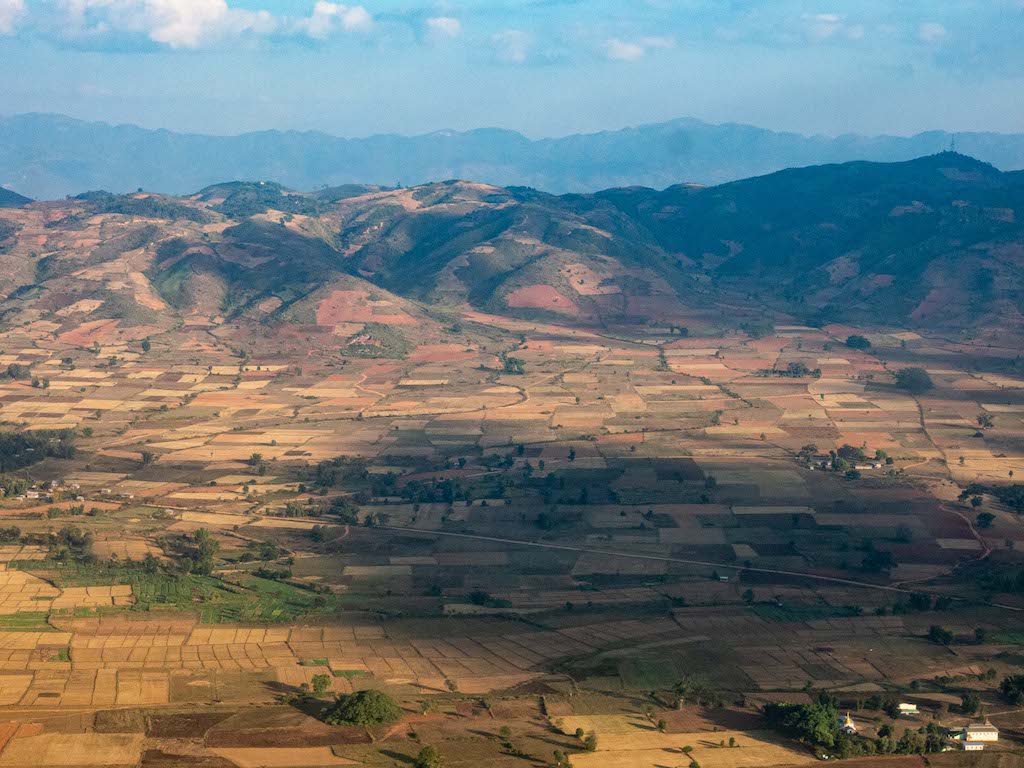
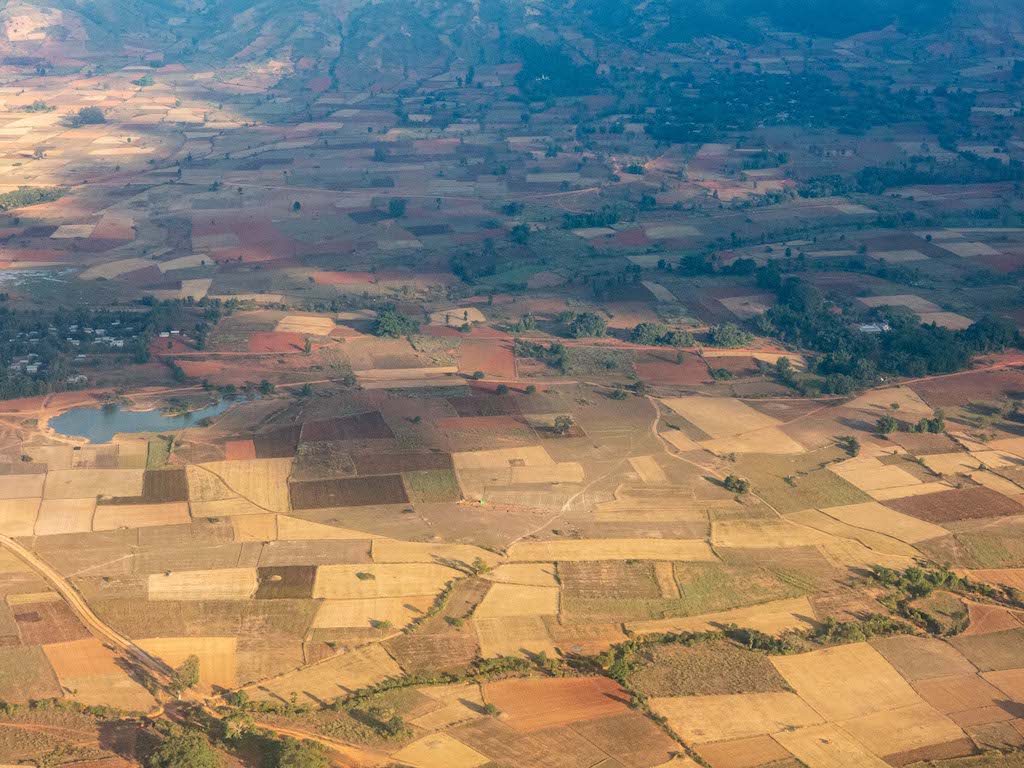
Nyaungshwe seemed to have grown exponentially in the twelve years since my last visit. It was no longer the sleepy village I remembered with just a few tourists wandering around. It seemed a hive of industry – but only along the main street. Take a road either side of the dusty main street and you seemed to be back in the countryside. I wandered around quite a bit sometimes in search of places I remembered: other times to discover new places.


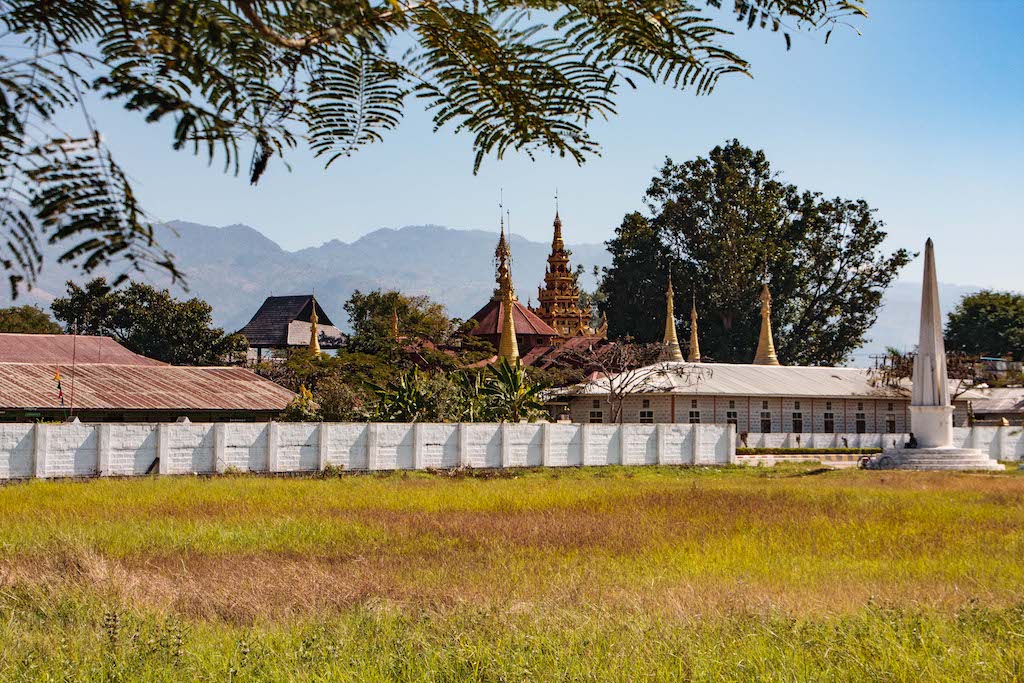
I remembered a lovely pagoda I used to go to in the evening when the villagers had finished their daily work and came to say their prayers. It was the peace and calm I remembered and I wanted to experience that again. It took a little bit of wandering but eventually I found the place. I was not disappointed. It was the middle of the day so the pagoda was empty. However, meeting a woman, a temple guardian, and her granddaughter rewarded me. The little girl was especially interesting to me as she had Down syndrome. She was beautifully cared for and clearly the apple of her grandmother’s eye.
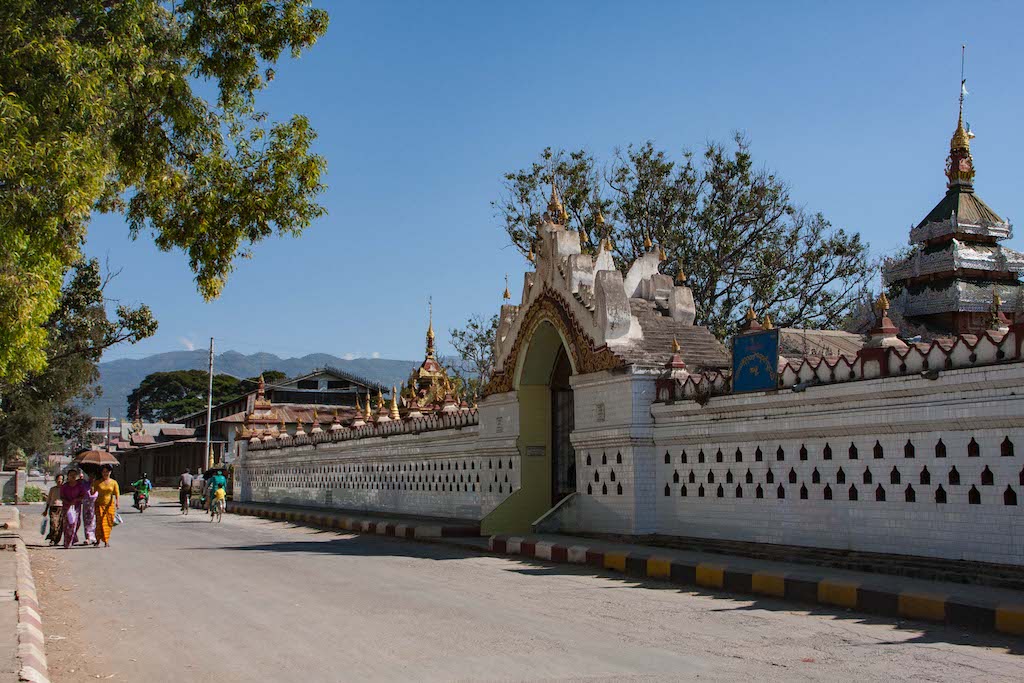

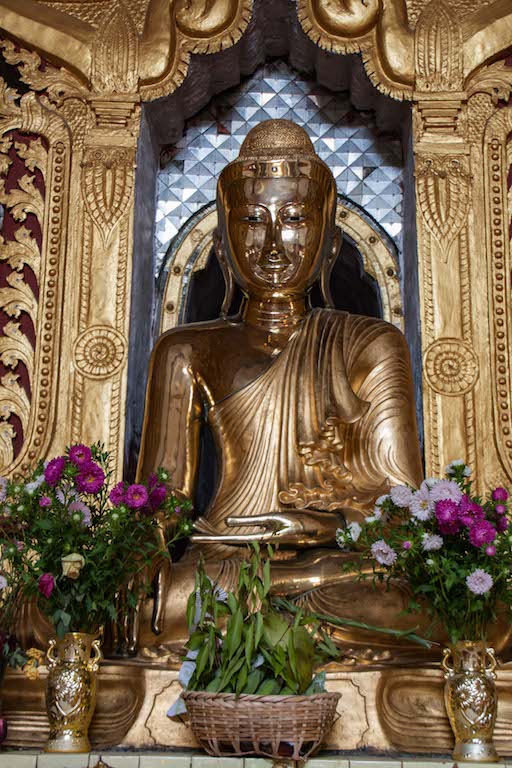

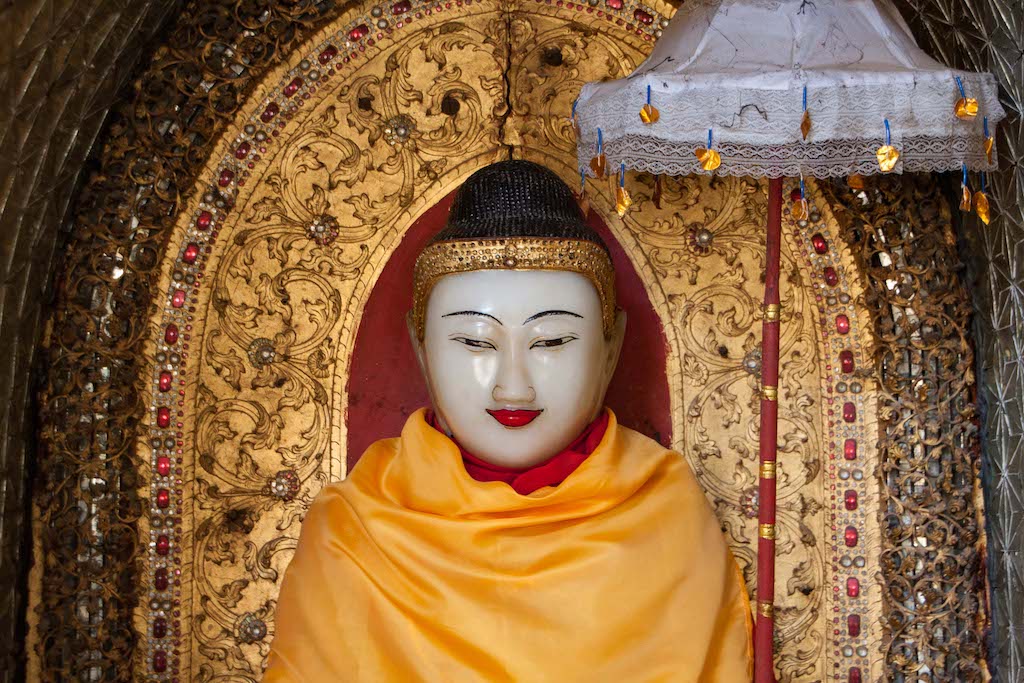
On my walk back to the guesthouse, finding a small stupa and temple complex that was completely white with gold trim doubly rewarded me. It was across the road from a very old monastery full of teenage boys for in Asia monasteries often function as high schools. There were a few older terracotta structures with reliefs on the site (and I wondered if they might have been part of the monastery that was decimated by earthquakes more than once and had to be rebuilt) but the stupa and other buildings appeared to be new or maybe that was the appearance because of the white and gold paint. The chinthe or temple guardians had a distinct look of Thailand as did a recurring motif of a young girl who appeared to be washing her hair. This is a well-known Buddhist story in Southeast Asia: the image is of Phra Mae Thorani (Thai) or Wathondara (Burmese). She is the mother goddess of Southeast Asia and she is seen all over the region not just in Thailand and Burma. She is wringing the cool waters of detachment from her hair to drown Mara, the demon sent to tempt Gautama Buddha under the Bodhi tree.



On my first visit to Myanmar, gently bumping round potholes with Kyaw Zin, I had noticed that as one stupa faded behind us, another white bell-shape beckoned. Myanmar seemed to be a sea of red dust and bright green vegetation with shining white beacons protruding through and summoning us forward. And now, I was standing in Nyaungshwe in a small white temple complex that seemed fabricated out of icing sugar. Here was another very sweet memory I could carry with me until my next trip to this magical land.

Privacy Policy



Great to read of your adventures Janet and seeing your beautiful photos.
Great pictures and so nice to read your stories!